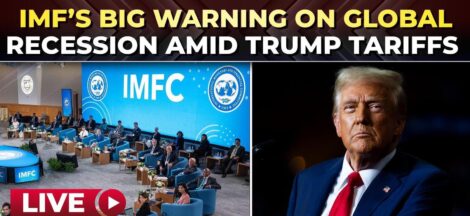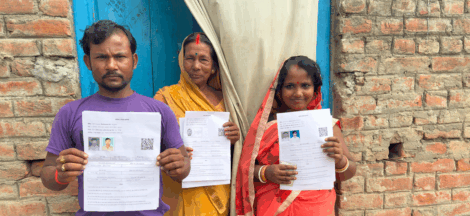By Dr. Gyan Pathak
In a business-as-usual scenario, Green House Gas (GHG) emissions in India is set to increase by 40 per cent by 2030. Hence, achieving its targets, would need significant scaling up of its current policies, according to an IMF assessment.
Economists in the IMF’s Asia and Pacific Department Margaux MacDonald and John Spray has said in their country focus article, “While a modest increase in short-term emissions may be necessary to meet poverty reduction and energy security goals, a more rapid scaling up of current policies could help lower emissions considerably over the medium-term and bring India closer to a path to net zero by 2070.
It is worth noting that Nationally Determined Contribution (NDC) target for India is a 45 per cent reduction in emissions intensity of GDP (ceiling) by 2030. This target is estimated using historical emissions dada and GDP growth projections and is met in baseline. Net-zero target for 2070 is declaration / pledge.
IMF-ENV model has illustrated three emissions trajectories based on three scenarios – Business as usual, Alternative Emissions Trajectory (a reduction equivalent to a $25 carbon price in 2030), and Illustrative direct path to net-zero 2070 target.
At the time of Paris Agreement in 2015, Indian GHG emissions, was a little above 3,000 mt of CO2e per year. Barring in 2020, when the country was under lockdown due to COVID-19 outbreak during which the economic activities were significantly reduced, every year emissions increased. Even in 2020, the total emission level was a little above than in 2015. In the beginning of 2022, it increased to about 3400 mt and is on the increase. In business-as-usual condition it would be above 4200 mt by 2023, and above 7200 mt by 2040.
IMF research shows that by both alternative emissions trajectory or even the direct path to net-zero by 2070, India’s emission would remain almost at the same level as it was in the beginning of 2022. However, there would be much difference by 2040 when alternative emissions trajectory would be touching around 4400 mt while direct path to net zero around 2800 mt, even less than at the level of 2015.
The trajectories clearly show that India needs much more than what has been done. India is slowly shifting towards greater renewable energy generation while striving to improve energy access, affordability, and security. Moreover, the country’s energy demand is likely to increase sharply because of its economic development needs, which it must fulfil either through fossil fuels or through green alternatives on which the achievements towards GHG emissions target heavily depend.
The IMF economists say that as in most countries achieving net zero will require adjustments to how people live, work, and get around – and some of these changes will be costly. But upfront action could lower the cost. “First, India is expected to increase investments in coal-fired power plants, but by limiting these investments, substantial irreversible fixed costs could be saved. Second, early scaling up of renewable energy allows for a more gradual policy adjustment, which may be less politically costly, and for a more continual adoption of new technologies. Costs can also be amortized over longer periods.”
The economists said on the basis of IMF research that an alternative emissions trajectory could be achieved by scaling up the current policies. One of their proposals includes a gradual increase in subsidies on the use of renewable energy coupled with higher taxes on emissions, in addition to the many targeted polities that India has focused on.
They further argued that this would have the added benefit of early reduction in the reliance on imported fuels, helping to ensure universal access to energy, and of lessening the negative health effects from pollution. External climate financing and technology transfer would help mitigate costs and ensure sustainability.
In their model, they said, combining renewable subsidies and higher tariffs on coal (roughly equivalent to ramping up India’s existing excise duty on coal) would result in nearly one third lower emissions by 2030 compared to current policies.
In this scenario, growing energy demand is met through a gradual increase of renewable energy and by allowing coal power to taper off, thus exceeding the goal of 50 percent non-fossil fuel electricity capacity. Under such a policy, not only would the share of renewables rise significantly but overall electricity supply would increase.
They have estimated that the adoption of such a policy would result in a modest reduction in the level of real gross domestic product (relative to projections based on current policies) as firm and consumers pay higher taxes. It would have also clear environmental benefits, they have argued, while asserting that enough fiscal revenues would be raised to compensate the poorest citizen to such an extent that the policy would be progressive overall. Additionally, the small cost of this policy is less distortionary than other options, they emphasized.
Lower emissions would have significant benefits. Increasing renewable energy usage and allowing coal to taper-off in this policy scenario would lead to a 2.5 percent reduction in pollution, saving lives and leading to fewer missed school and workdays. It would also decrease coal imports by 14 percent by 2030, thus increasing resilience to global changes in energy prices and improving energy security, IMF economists asserted. (IPA Service)



